Metaverse Land Value Calculator
Estimate the current market value of virtual land parcels in popular blockchain metaverses based on location type and platform.
Imagine walking through a digital city where every building, shirt, and painting you own is truly yours - not just saved on a server, but locked into a blockchain that no one can take away. That’s the promise of blockchain metaverse platforms. Unlike old-school virtual worlds where your stuff could vanish if the company shut down, these platforms use blockchain to give you real ownership. You can buy land, sell your avatar’s outfit, host a concert, or even rent out your digital storefront - all with crypto payments and no middleman.
What Makes a Metaverse Platform ‘Blockchain-Based’?
Not every virtual world is built on blockchain. Many games let you collect skins or items, but if you leave the game, you lose them. A true blockchain metaverse gives you control through NFTs - unique digital tokens that prove you own something. These aren’t just pictures; they’re verifiable assets stored on a public ledger. Every time you trade land, wear a virtual jacket, or earn tokens for hosting an event, that transaction is recorded on the blockchain. That means no one can delete your property, hack your balance, or change the rules behind your back.
These platforms also use crypto tokens for everything: buying land, voting on changes, paying for services. And because they’re decentralized, users often run the show through DAOs - groups where decisions are made by voting, not by a CEO. If you hold enough tokens or land, you get a say in how the world evolves.
Decentraland: The Original Open-World Metaverse
Decentraland was the first major blockchain metaverse to go live, opening its doors in February 2020 after raising $24 million in 2017. Built on Ethereum, it’s a browser-based 3D world where users own parcels of virtual land called LAND - each one a unique NFT. There are no downloads. Just open your browser, connect your wallet, and you’re in.
The platform runs on two tokens: MANA, used for buying things, and LAND, which represents real estate. Owners can build anything - art galleries, casinos, concert halls - and charge visitors entry fees or sell items directly from their plots. Brands like Samsung, Adidas, and Sotheby’s have set up permanent galleries here. Artists host live exhibitions. Musicians throw after-parties. You can even rent out your land to others.
What sets Decentraland apart is its governance. The Decentraland DAO lets token holders vote on everything from platform fees to content moderation. If a majority agrees to change how the marketplace works, it happens. No company decides for you. It’s not perfect - gas fees on Ethereum can spike to $15 during busy times - but it’s the most mature, battle-tested environment for open, community-run virtual spaces.
The Sandbox: Where Gaming and Branding Collide
If Decentraland is the digital city, The Sandbox is the game studio. Launched in 2011 as a voxel-based game, it evolved into a blockchain metaverse in 2021. It’s built on Ethereum too, but it’s designed for creators who want to make games, not just buildings. Its tools - VoxEdit for 3D modeling and Game Maker for coding interactive experiences - let anyone turn their ideas into playable games without writing a single line of code.
Big names like Warner Bros., Ubisoft, and Snoop Dogg have partnered with The Sandbox to drop exclusive NFTs and themed zones. You might walk into a virtual studio where you can play a mini-game based on a classic movie, then buy the character you just fought as an NFT. It’s more playful, more colorful, and more focused on entertainment than Decentraland.
The Sandbox also rewards users for playing. Seasonal events give out $SAND tokens just for exploring, completing quests, or building content. This turns passive users into active creators - and creators into entrepreneurs. You don’t need to own land to earn here. Just make something cool, and people will pay to use it.

Blockchains Behind the Scenes: Ethereum, Solana, and More
Not all blockchains are created equal. Most metaverse platforms run on Ethereum because it’s the most secure and has the biggest developer base. But Ethereum’s fees and slow speeds are a real problem. That’s why many platforms now use Layer 2 solutions like Polygon, which cuts transaction costs by 90% while still being secured by Ethereum.
Solana is the rising star. It handles over 50,000 transactions per second and charges pennies per trade. In 2025, after its Alpenglow upgrade fixed past outages, it became a favorite for NFT marketplaces and fast-paced games. If you’re building a real-time virtual concert or a multiplayer shooter in the metaverse, Solana’s speed makes it feel smooth - not laggy.
Polkadot and Flow offer different advantages. Polkadot lets different blockchains talk to each other, so your NFT from Decentraland could one day appear in a Solana-based game. Flow, built by Dapper Labs (the team behind NBA Top Shot), is optimized for mass adoption - easy to use, cheap, and built for mainstream users who don’t care about crypto jargon.
So which blockchain should you care about? If you’re buying land or holding long-term assets, Ethereum + Polygon is still the safest bet. If you’re gaming or trading NFTs daily, Solana gives you a better experience. And if you want your assets to move freely between worlds, keep an eye on Polkadot’s bridges.
How People Are Making Money in These Worlds
People aren’t just playing in these metaverses - they’re working in them. Here’s how:
- Virtual Real Estate: Prime LAND in Decentraland sells for over $50,000. Owners rent it out for events or flip it for profit.
- Content Creation: Artists sell NFT wearables, 3D models, and animations on marketplaces. One designer earned $120,000 in six months selling digital hats.
- Event Hosting: Brands pay thousands to host virtual launches, art shows, or conferences. A single fashion show in Decentraland can draw 10,000+ visitors.
- Game Development: Creators on The Sandbox earn $SAND when players use their games. Top builders make $5,000+ per month.
- Land Leasing: If you own land but don’t want to build, you can lease it to others for a monthly fee in crypto.
Some even run virtual real estate agencies, helping brands buy land or design spaces. It’s not fantasy - it’s a real economy with real income.
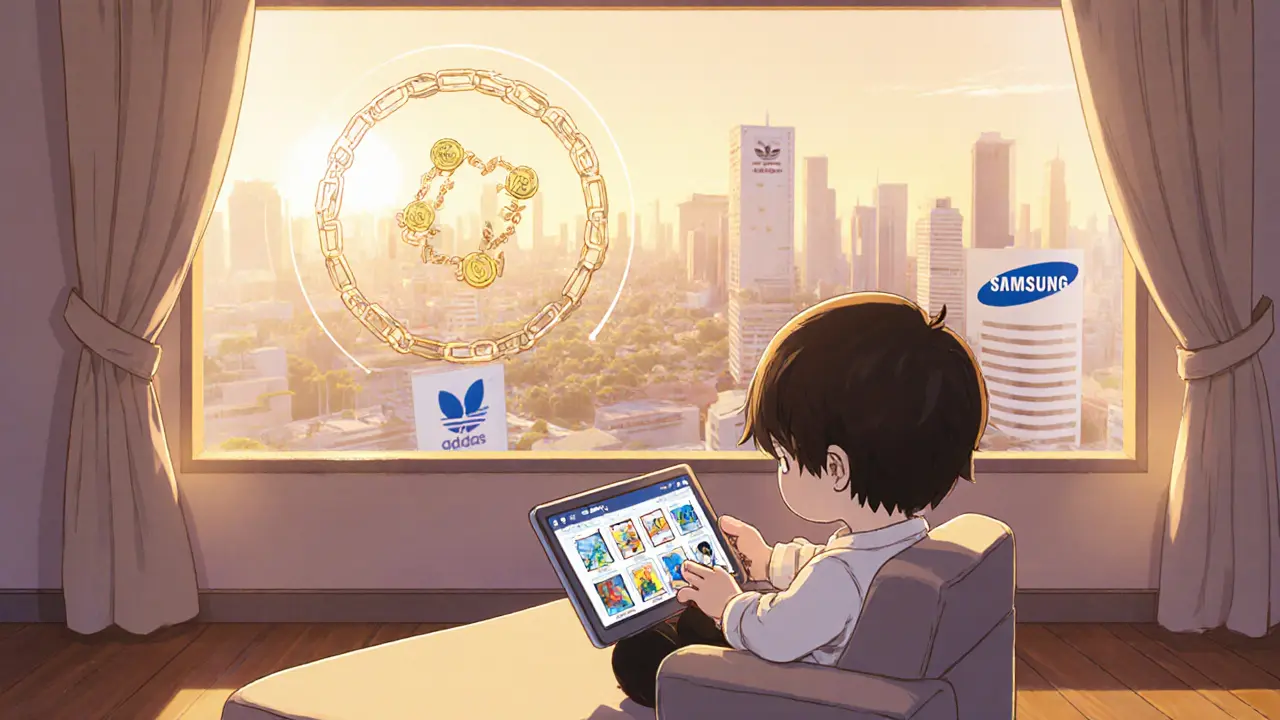
What’s Next for Blockchain Metaverses?
Right now, most metaverses feel like early web browsers - functional, but clunky. The next wave is about making them feel real. That means better graphics, voice chat, AI NPCs that remember you, and seamless movement between worlds.
Interoperability is the big goal. Right now, your NFT from Decentraland can’t walk into The Sandbox. But new bridges are being built. Soon, your avatar and clothes could follow you across platforms - like how your email works everywhere.
DeFi is also creeping in. You can now borrow against your virtual land, earn interest on your MANA, or stake tokens to help secure the network. These aren’t gimmicks - they’re turning metaverses into full financial ecosystems.
Education and work are next. Universities are testing virtual campuses. Law firms are holding meetings in 3D spaces. The metaverse isn’t just for gamers anymore. It’s becoming a place to live, work, and connect - with real ownership and real value.
Should You Get Involved?
It’s not too late. You don’t need to buy $50,000 of land to start. Here’s how to dip your toes in:
- Get a crypto wallet like MetaMask.
- Buy a small piece of LAND or a wearable NFT for under $10.
- Visit Decentraland or The Sandbox through your browser - no downloads needed.
- Explore, talk to people, join a community event.
- Try building something simple with Game Maker or the Builder tool.
If you enjoy it, you can start creating, trading, or even earning. If not, you’ve lost little. But if you’re early and stay curious, you might be building the next digital economy - not just visiting it.
Can I really own land in a blockchain metaverse?
Yes. Platforms like Decentraland and The Sandbox sell virtual land as NFTs - unique digital assets stored on the blockchain. Once you buy it, it’s yours forever, and you can sell, rent, or build on it. No company can take it away.
Do I need expensive hardware to use these platforms?
No. Decentraland and The Sandbox work directly in your browser on most modern laptops and phones. You don’t need a VR headset. High-end graphics help, but they’re not required to explore or interact.
Is it safe to buy NFT land?
The blockchain itself is secure, but scams exist. Only buy from official marketplaces. Never share your wallet seed phrase. Check the contract address before purchasing. Legitimate land sales are transparent and recorded on-chain.
Which blockchain is best for metaverse platforms?
Ethereum is the most secure and widely used, but it can be expensive. Polygon offers lower fees while staying secure. Solana is faster and cheaper, ideal for gaming and trading. The best choice depends on what you want to do - long-term ownership favors Ethereum, daily use favors Solana or Polygon.
Can I make money without spending money first?
Yes. The Sandbox rewards players with $SAND tokens just for playing and creating. You can also earn by designing NFT assets, hosting events, or helping others navigate the platform. Many users start with free tools and build up earnings over time.

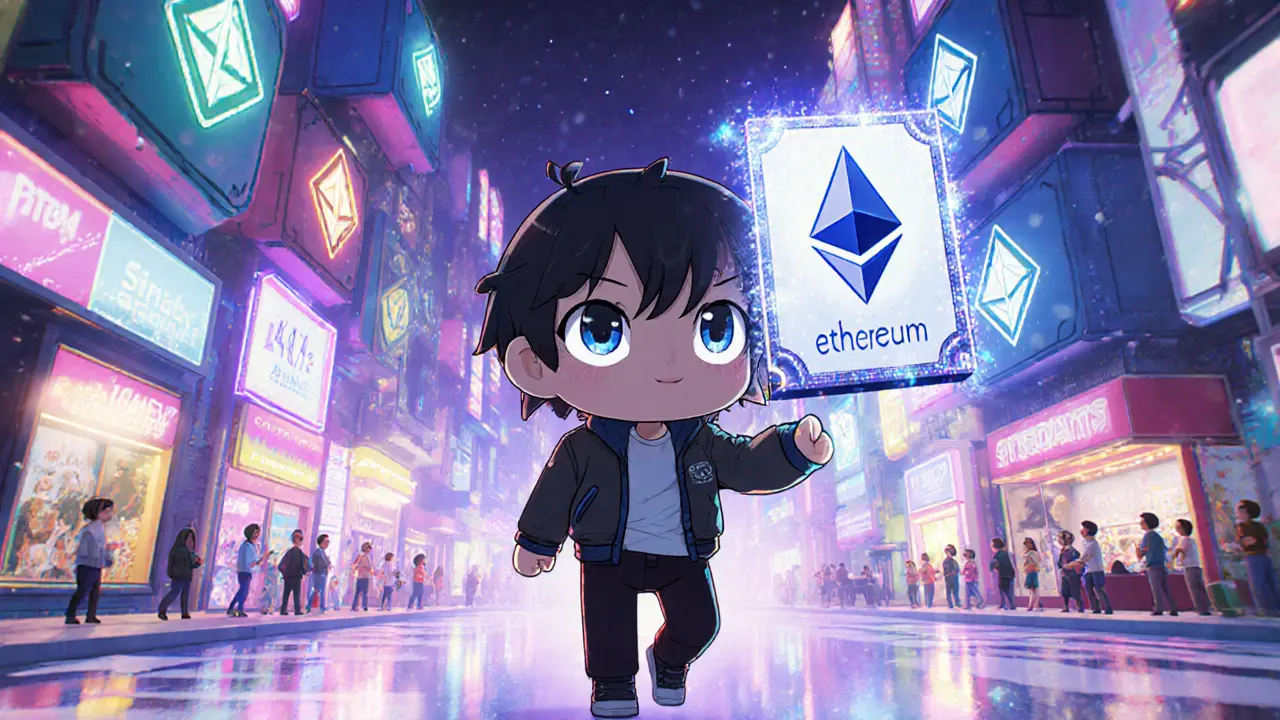
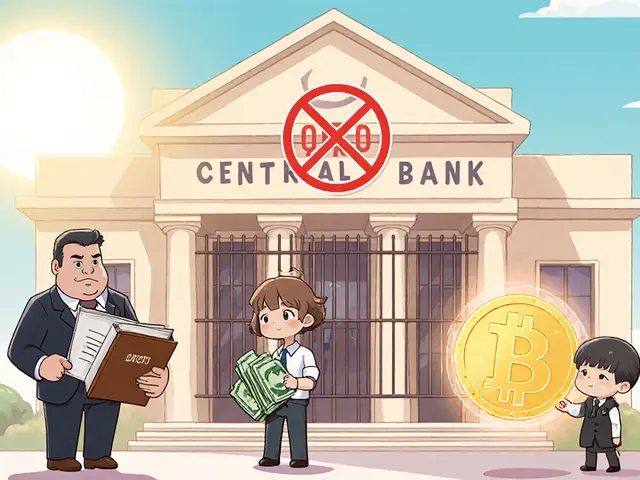
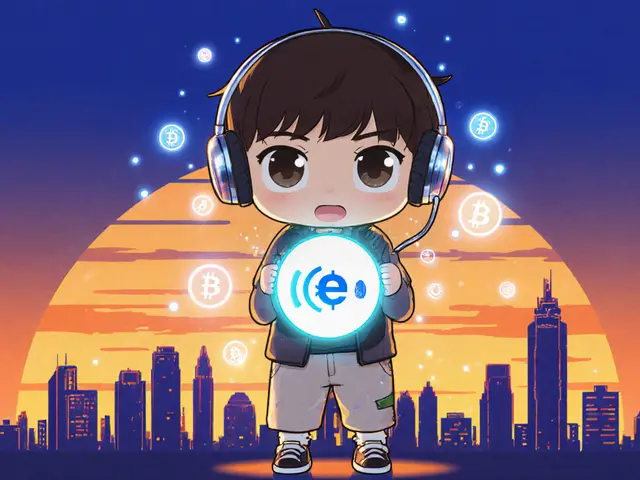

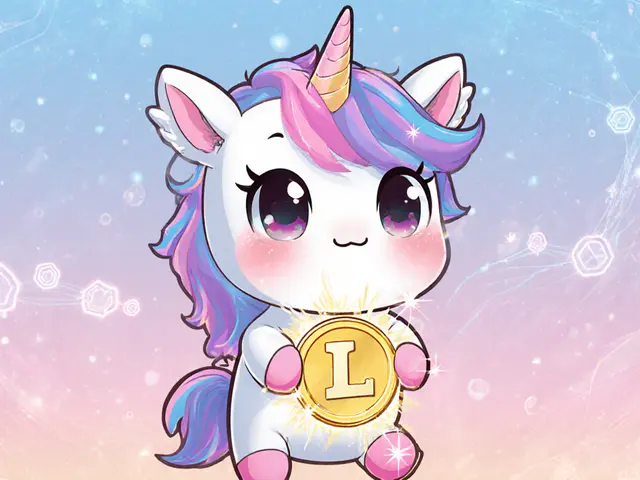

Hanna Kruizinga
November 3, 2025 AT 06:39This is all just a crypto scam dressed up like a video game. They’re selling pixels and calling it land. Next thing you know, the devs will vanish with your MANA and leave you with a digital ghost town. I’ve seen this movie before - remember Second Life? Same ending. 🤡
David James
November 3, 2025 AT 22:41Hey everyone! I just tried Decentraland last night and it was so cool! I bought a tiny plot for like 5 bucks and made a little flag that says ‘hi’! I didn’t even know how to use a wallet before but I figured it out! 😊
Shaunn Graves
November 4, 2025 AT 22:01Oh please. You think owning a pixelated plot means anything? The entire system is built on hype and delusion. NFTs are just JPEGs with a blockchain stamp. And DAOs? A joke. The ‘voting’ is controlled by whales who own 80% of the tokens. You’re not owning anything - you’re just a renter in someone else’s pyramid scheme.
Jessica Hulst
November 6, 2025 AT 12:39It’s fascinating, really - we’ve built a digital feudalism where the serfs buy their own shackles in the form of NFTs, then proudly post screenshots of their virtual porches on Twitter. We’ve replaced the landlord with a smart contract, but the exploitation? Still the same. The only difference is now you get to pay gas fees to be oppressed. I suppose that’s progress? Or maybe just a new flavor of capitalism with better lighting.
Kaela Coren
November 7, 2025 AT 08:55While the concept of decentralized ownership is theoretically compelling, the practical implementation remains fraught with usability barriers and speculative volatility. The disconnect between ideological promise and user experience is significant. One must question whether the underlying infrastructure supports sustainable economic participation, or merely facilitates speculative extraction.
Nabil ben Salah Nasri
November 7, 2025 AT 12:56OMG this is so cool!! I just got my first NFT hat and I’m literally crying 😭💖 I never thought I’d own something digital that’s truly mine! Thanks for this post!! 🙌🌍✨
alvin Bachtiar
November 9, 2025 AT 03:48Let’s be brutally honest - this isn’t a metaverse. It’s a glorified Minecraft server with a crypto tax. The ‘ownership’ is a legal fiction enforced by code that can be forked, abandoned, or hacked. Solana’s 50k TPS? Cute. Until it crashes again. And don’t get me started on the environmental cost of minting 10 million JPEGs of cartoon apes. You’re not building the future - you’re just gaslighting yourself into thinking you are.
Josh Serum
November 10, 2025 AT 21:43You guys are missing the point. This isn’t about land or NFTs. It’s about community. I met a guy from Brazil who builds virtual churches and we’ve been hanging out in Decentraland every Sunday. We talk about life, faith, art - it’s real connection. You can’t put a price on that. And yeah, maybe the tech is messy - but so was the early internet. This is the next chapter.
bob marley
November 10, 2025 AT 23:49Blockchain metaverses? More like blockchain traps. The real owners aren’t you - they’re the VC-funded founders who cashed out in 2021 and are now sipping margaritas in Bali. You’re just the sucker holding the bag while they print more tokens. Wake up. This isn’t Web3. It’s Web3.0 - the ‘0’ stands for ‘zero’ value.
Jeremy Jaramillo
November 12, 2025 AT 12:34If you’re new to this, start small. Don’t buy land. Don’t panic-sell. Just explore. Talk to people. Try building something simple. You don’t need to be rich to be part of this. You just need curiosity. And patience. The future doesn’t belong to the fastest - it belongs to the ones who show up consistently.
Sammy Krigs
November 12, 2025 AT 14:38i just bought a virtual shirt for 3 bucks and it looks like a potato with eyes but i love it lol
naveen kumar
November 14, 2025 AT 11:22Who told you blockchain is decentralized? The Ethereum Foundation controls the core protocol. The DAOs are puppet shows. The ‘users’ are bots. The ‘economy’ is pump-and-dump. You think you’re free? You’re just another node in a surveillance-capitalist network masquerading as liberation. This isn’t the future - it’s the same corporate control with more buzzwords.
David Roberts
November 15, 2025 AT 04:23Interoperability remains the Achilles’ heel. Until we achieve cross-chain asset portability - and that’s a massive technical and governance hurdle - we’re just operating siloed digital theme parks. The promise of a unified metaverse is still vaporware. The blockchain is not the solution - it’s the scaffolding for a structure that hasn’t been designed yet.
Monty Tran
November 16, 2025 AT 12:54Everyone’s acting like this is revolutionary. It’s not. It’s a bunch of tech bros playing dress-up with their crypto gains. The only thing being built is a new bubble. And when it pops, you’ll be the one explaining to your kids why you spent your life savings on digital hats.
Beth Devine
November 17, 2025 AT 23:03For anyone hesitant - try it for free. Visit Decentraland. Walk around. Talk to someone. You don’t need to spend a cent. If you feel something - even a little spark - that’s worth more than any NFT. Don’t rush. Just observe. The experience grows on you.
Brian McElfresh
November 19, 2025 AT 11:44They say ‘no one can take it away’ - but what happens when the Ethereum network gets shut down by regulators? Or when the smart contract has a bug? Or when the wallet provider goes bankrupt? Your ‘ownership’ is only as strong as the weakest link in a chain you don’t control. This isn’t ownership - it’s illusion with a blockchain label.